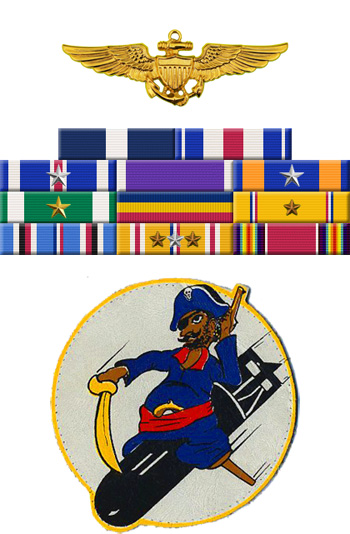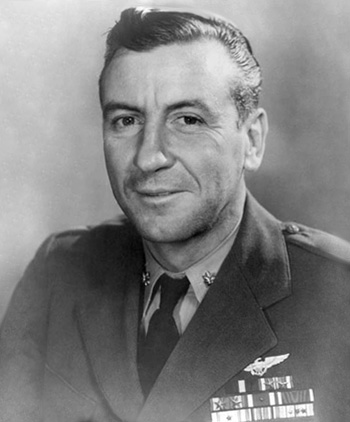Norman Miller was born on February 1, 1908, in Winston-Salem, North Carolina. He entered the U.S. Naval Academy on June 20, 1927, and was commissioned an Ensign in the U.S. Navy on June 4, 1931. After completing surface fleet assignments, Miller entered pilot training at NAS Pensacola, Florida, in 1933 and was designated a Naval Aviator in 1934. During World War II, CDR Miller served as the first commanding officer of Bombing Squadron 109 (VB-109), flying the PB4Y-1 Liberator, first at NAS San Diego, California, and then deployed to the Pacific Theater at Kaneohe, Apamama, Kwajalein, Eniwetok, and Saipan from August 2, 1943, to September 15, 1944. Miller then returned to the U.S. and died on active duty shortly after the war ended on May 21, 1946. He was posthumously promoted to the grade of Captain (O-6) and was buried at Arlington National Cemetery.
His Navy Cross Citation reads:
The President of the United States of America takes pleasure in presenting the Navy Cross to Commander Norman Mickey Miller, United States Navy, for extraordinary heroism in operations against the enemy while serving as Commander of a Navy PB4Y Patrol Plane Commanding Officer of Patrol-Bombing Squadron ONE HUNDRED NINE (VPB-109), in action on 16 May 1944, at Truk Lagoon. During a long-range reconnaissance flight to Truk, Commander Miller spotted a 5,000-ton freighter anchored in the lagoon. He made a beam attack, releasing three bombs at masthead height, heavily damaging the vessel. He then spotted a 10,000-ton ship that immediately exploded after his bomb run, destroying a large portion of the vessel. He then proceeded on to Puluwat, arriving over the Japanese airfield at minimum altitude, surprised and strafed a formation of 30 enemy soldiers. In this attack he destroyed one truck, an aircraft revetment and dropped two bombs on a radio station. In his last bomb run on the radio station the Liberator was hit four times by AA fire, one exploding directly above the cockpit, wounding both Commander Miller and his second pilot. Despite his wounds and damage to the aircraft, Commander Miller flew the Liberator 800 miles back to base for a safe landing. His outstanding courage and determined skill were at all times inspiring and in keeping with the highest traditions of the United States Naval Service.
|



